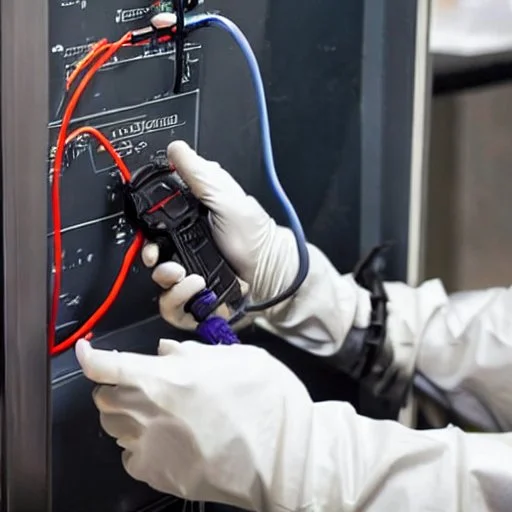July 19, 2025

Electrical equipment needs proper grounding for safety and efficiency. Grounding involves connecting a circuit or appliance to the earth to provide a path for electrons to travel back into the ground. This helps prevent short-circuits or malfunctions due to power surges or other external factors. Grounding also protects against electric shock hazards when people touch exposed wires or other electrically charged parts of the system. By following guidelines, users can reduce these risks and ensure their equipment remains safe and functional. This article aims to provide practical advice on grounding electrical equipment.
Understanding the basics of earthing electrical equipment is a crucial part of ensuring safety and compliance. Earthing principles are based on a fundamental understanding of electricity's behavior as it seeks to move from areas with higher potential to those with lower potential to create a balance. This means that when designing or operating any kind of electrical system, there should be provisions for draining away any excess current caused by faulty wiring or other malfunctions. By providing an effective earthing connection, risk assessment can be minimized, and standards can be met. In most cases, this is achieved through grounding the metal casing of the equipment to provide a safe path for stray electricity to flow away without risk of harm. Additionally, providing an appropriate earthing connection can help improve system performance by preventing surges and power outages caused by improper earthing techniques. Furthermore, having an adequate earthing connection ensures that all electronics within the system are properly insulated from each other, which helps reduce the chances of short circuits occurring due to contact between two different systems.
Identifying potential hazards is crucial to safely operating electrical equipment. It's important to be aware of the risks associated with electricity, such as electrocution, fire, burns, and shock. Recognising these risks and taking preventative safety measures is critical to minimising the risk of harm or injury while using electrical equipment.
The most common hazard related to electrical systems is shock since it can cause serious cardiac problems or even death if not handled properly. Additionally, improper grounding can also lead to fires caused by increased electric currents that can damage both property and people. Using precautions like a ground fault circuit interrupter (GFCI), which instantly shuts off power when there is an overload of electricity, helps protect against fires and other accidents that can occur due to faulty wiring or improper installation.
Properly maintaining all equipment used in conjunction with an electrical system is another way to ensure that the system remains safe for use at all times.
Installing grounding equipment is crucial for protection against electrical hazards like electrocution, fire, burns, and shock. This safety equipment includes items such as ground fault circuit interrupters (GFCI) or surge protectors.
To ensure proper grounding, it is essential to use the correct techniques and methods during installation. This not only helps prevent electric shocks caused by incorrect wiring or faulty electrical components, but it also ensures that everything is connected properly.
When installing grounding equipment, safety should always be a top priority. To ensure safe and correct installation, it's important to carefully read all instructions and double-check your work at each step of the process.
Regular inspections of grounding equipment are also crucial to prevent potential risks due to wear or damage.
Testing the earthing system is crucial to ensure its efficacy and safety of those using it. As per the standards set by the National Electric Code (NEC), all electrical installations must have a proper earthing system. To verify if the installed equipment meets these requirements, a test procedure must be conducted. The most commonly used test procedure is an ohms or resistance measurement between the earth terminal and the neutral conductor in either AC or DC systems. This will reveal any loose connections, any earths that are not properly bonded, or any other irregularities in the system's earthing rules. Additionally, a voltage testing procedure should also be done to make sure there are no excessive voltages present on the earth which may affect operations of machines or cause injury to personnel working with this equipment. Regularly performing these tests will ensure that all electrical installations comply with NEC's regulations and provide safe working conditions for everyone involved.
Maintaining and monitoring the earthing system is crucial to ensure its effectiveness and the safety of those using it. Regular inspections should be carried out to identify any issues with the earthing system, such as corroded connections or weak links. This can help prevent electrical shocks or fires caused by faulty equipment. The inspections should involve a thorough examination of all connections, ensuring they are secure and free from rust or other signs of wear and tear. It is also important to check for loose wires, as they can pose a significant risk if left unchecked. Furthermore, it is essential to ensure all cables are correctly attached and firmly secured in place to prevent them from becoming detached during use. All of these measures are necessary for proper maintenance and monitoring of the earthing system.
Grounding electrical equipment is vital to ensure the safe operation of any system. It helps safeguard personnel and equipment from electrical shock, arcing, and other hazardous effects of electricity. Installing grounding equipment correctly ensures all components function as intended and with minimal interruption caused by a malfunction or fault.
It is important to regularly test and maintain the ground system to ensure it continues to protect personnel and electrical systems from potential hazards. By following these procedures, the risk of injury or damage due to an electrical fault can be significantly reduced.